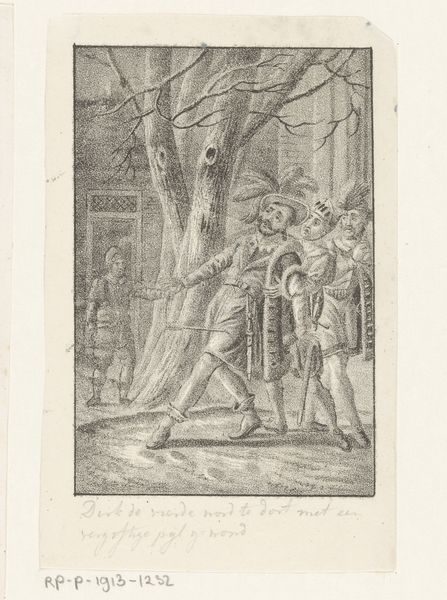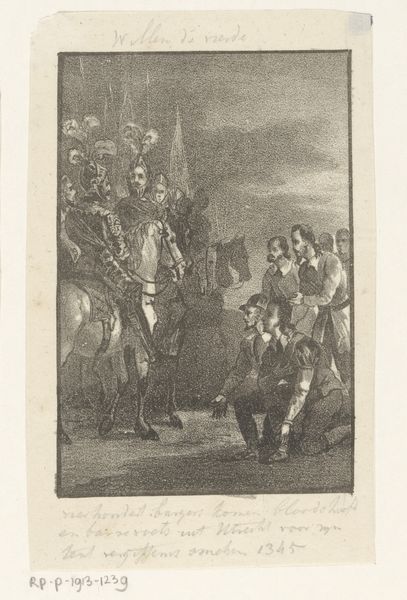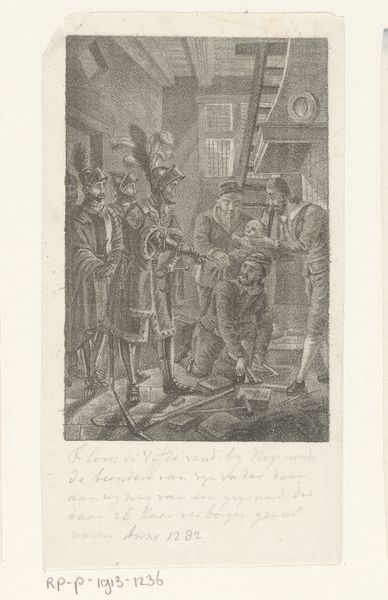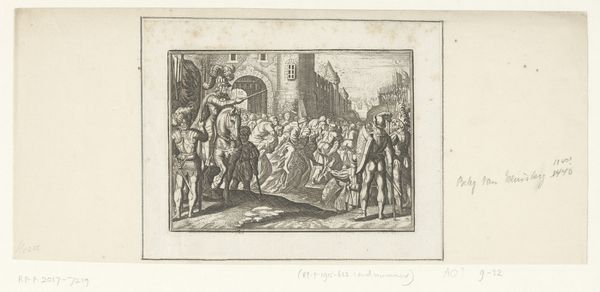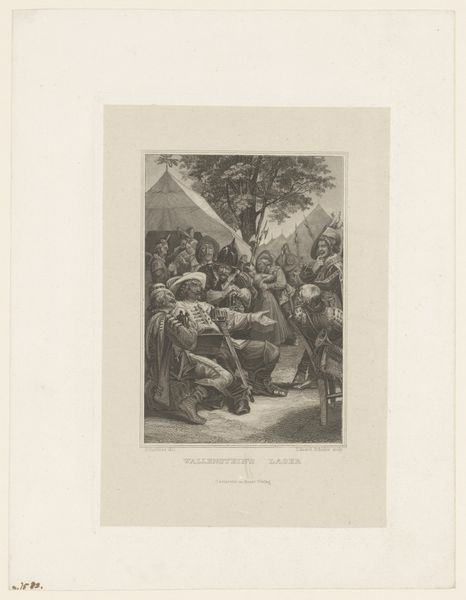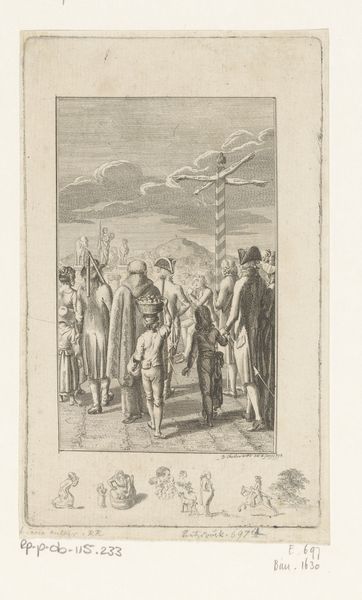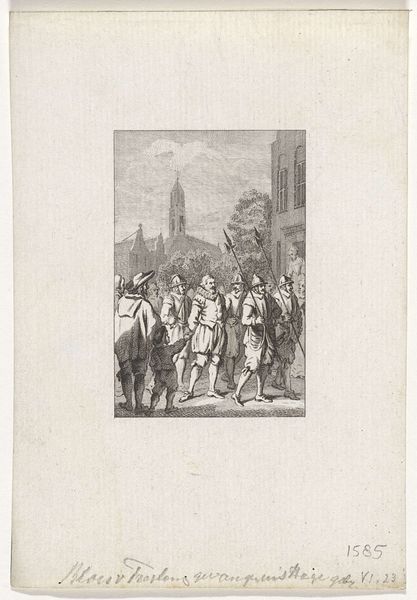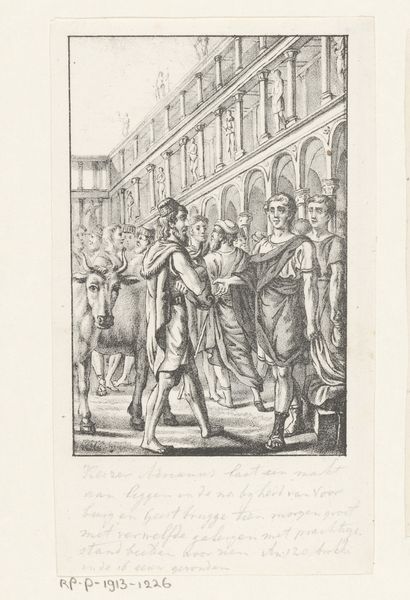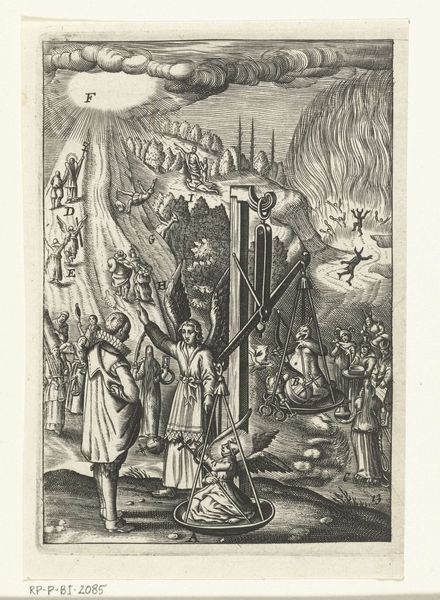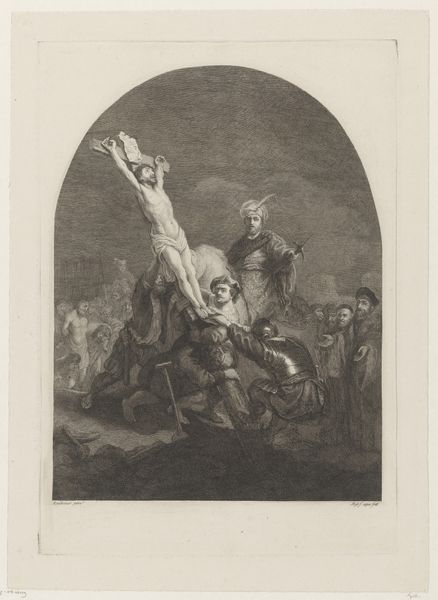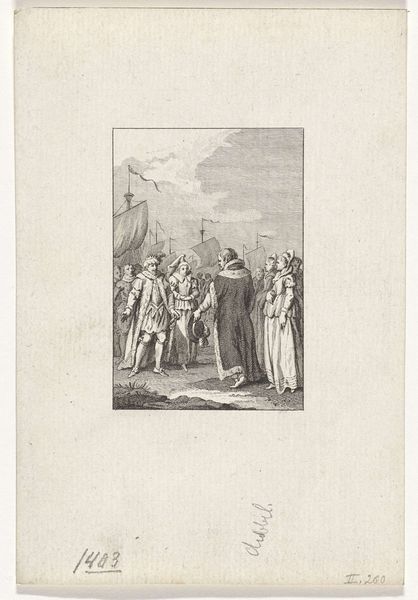
engraving
#
neoclacissism
#
narrative-art
#
old engraving style
#
figuration
#
history-painting
#
engraving
Dimensions: height 180 mm, width 95 mm
Copyright: Rijks Museum: Open Domain
Curator: Standing before us is the engraving, "Opstand van Claudius Civilis", dating roughly from 1809 to 1899, a compelling historical scene currently housed in the Rijksmuseum. Editor: The overall impression is one of grim determination, a serious gathering in a rather ominous setting, look at those shadowy figures and raised weapons, the details so meticulously rendered for such a small scale engraving. Curator: Absolutely, and knowing this piece depicts Claudius Civilis leading the Batavian revolt against Roman rule adds layers of historical and political significance. Think about the symbolism of a local uprising challenging imperial power, something quite potent even centuries after the events. How might such imagery resonate today with contemporary social movements? Editor: I'm more interested in the material process – the transfer of an image onto a copper plate, the labour involved in repeated printmaking… consider the way the engraver's tools and the paper they printed on mediate this historical moment for broader consumption. It is how material choices influence our perception. Curator: That's a vital consideration! How the deliberate manipulation of the medium further emphasizes the narrative and helps communicate complex socio-political ideas. And the composition is undeniably evocative, how might Neoclassical ideals be subverted here? Editor: Notice also the practical use of the final product, these engravings were widely disseminated which is fundamental to understand their broader role in visual culture. I wonder what kind of inks were used? Curator: Thinking about the narrative, it raises questions around notions of national identity, resistance to oppression, the use of art to both document and propagate ideological perspectives, making it so much more than merely an engraving. Editor: It serves to remember that even artworks representing rebellion have very material origins: The copper plate, the engraver's burin, the inking process itself. Curator: Examining history through such works underscores how power dynamics can inform our interpretation of identity and resistance, opening up fascinating cross-disciplinary discourses. Editor: Quite so; an understanding of artistic processes can highlight previously unnoticed complexities about the labour, skill, and material considerations involved.
Comments
No comments
Be the first to comment and join the conversation on the ultimate creative platform.
